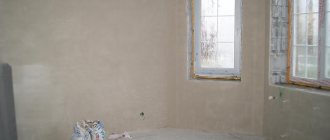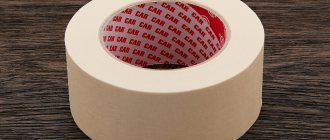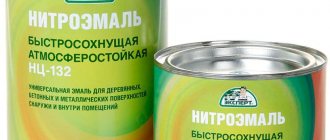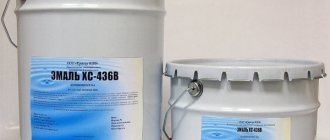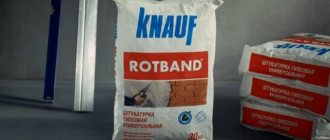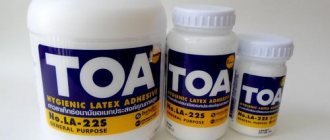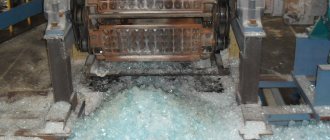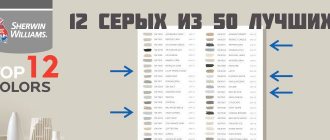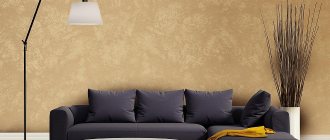Today, the construction industry is developing very rapidly, so multi-storey buildings are growing like mushrooms. Almost all houses are made using the same technology, so when considering one building you can confidently talk about all of them. Modern apartments have one small drawback, which developers worry little about, the soundproofing characteristics of walls and ceilings.
@zhidkaya_shumoizolyatsia
It’s a fairly common occurrence when you’re sitting in your apartment and hear your neighbors talking loudly or listening to music behind the wall. All this is to say that the walls are very thin and its soundproofing characteristics are low. To get rid of this problem, the only correct solution is to soundproof the walls, floors and ceilings.
Today, manufacturers of soundproofing materials offer customers a huge selection of products that can be selected according to various parameters and criteria. High-quality sound insulation will allow you to feel comfort and tranquility in your own apartment.
Advice! In order for liquid sound insulation in an apartment to be as effective as possible, an integrated approach is needed. It is not enough to isolate one surface; if you do, then completely. Using modern soundproofing materials, the noise level in the apartment can be reduced to 45 dB.
When it comes to soundproofing materials, there are several criteria by which it is selected. The very first thing that influences the choice is the area of housing. It is worth noting that in small rooms it is not recommended to use frame sound insulation. Today there are materials that make it possible to provide reliable and effective sound insulation with minimal loss of space.
@zhidkaya_shumoizolyatsia
Recently, liquid noise insulation has become popular among owners of small apartments, which, in addition to its affordable cost, can effectively protect the house from extraneous sounds. In this material we will try to consider the advantages and disadvantages of liquid sound insulation, as well as its scope of application in detail.
What is liquid sound insulation
What is liquid noise insulation?
Let’s consider the concept of “liquid noise insulation” in more detail. This is a unique product that can be easily applied to the ceiling, floor and walls to protect the room from various sounds. Polyurethane foam fills any cracks and creates a reliable monolithic layer. Sound insulation is indispensable if you need to get rid of insects and rodents. The method is universal, with a lot of advantages and no disadvantages!
How does sound insulation work?
Noise insulation is measures aimed at reducing noise and its impact. It works in two directions:
- reflects sounds entering the room from the outside (sound insulation),
- suppresses sounds coming from inside the room (sound absorption).
For external walls, materials that block vibrations of sound waves are usually chosen, and for internal walls, materials that absorb sound vibrations are usually chosen. In modern practice, multilayer structures are used for internal sound insulation, including both sound-absorbing and sound-reflecting materials.
Noise levels and their effects
Important: airborne sound insulation for floors does not guarantee protection against impact noise.
Types of liquid sound insulation
Now the market can offer consumers various soundproofing materials. All of them are distinguished by: manufacturer, characteristics, quality and price. Here is a rating of well-known polyurethane foam products:
- Synthesia is a material from a Spanish manufacturer. A compromise of low cost and high efficiency. Made from safe components.
- Ecotermix is a material created through joint production of our country and the Middle Kingdom. Has a competitive price. The product can be used in absolutely any room. In addition, it will protect them from mold and mildew. Thanks to fire resistance - 100% safe!
- Demilex is good, high-quality American sound insulation, but not everyone can afford it. The product is of the highest class.
- Bayer is a German foam known throughout the world. Popular due to its availability and German quality.
Based on the planned amount of money and the required characteristics, you can choose the appropriate liquid sound insulation.
Types of liquid soundproofing materials
Today, manufacturers of liquid sound insulation offer customers various types of material, which can be selected according to manufacturer, characteristics and cost. Polyurethane foam materials are produced in different countries, which determines their type, efficiency and price. Among the most common are the following:
- Polyurethane foam Synthesia this material is produced in Spain. The main advantage of sound insulation is its reasonable cost in relation to quality. The material is made from environmentally friendly ingredients, so it can be used for processing in residential areas. Also among the positive qualities of foam is the fact that it can be used at different temperatures.
- Ecotermix polyurethane foam sound insulation is a product of joint production between Russia and China. The material can be used in various rooms and has a high level of fire resistance. This sound insulation also protects wall surfaces from biological formations of fungus and mold. Speaking about the cost of foam, it can compete with products from other manufacturers.
- Demilec polyurethane foam material is manufactured in the USA. This product can be classified as a top-class product, as evidenced by its high quality, reliability and cost. The effectiveness of sound insulation is quite good, but not everyone can afford it.
- Bayer polyurethane foam is produced in Germany and is already a fairly well-known brand throughout the world. As always, the consistent German quality and relatively low cost of the material make it popular among buyers. If you need to perform high-quality sound insulation at a relatively low cost, then the Bayer brand provides its product.
@zhidkaya_shumoizolyatsia
Depending on your budget, you can choose the most suitable soundproofing option, which will help protect your apartment from noise and at the same time save money.
Pros and cons of liquid sound insulation
Like any material, liquid insulation has its pros and cons. Speaking about the advantages, it is worth highlighting the following:
Advantages and disadvantages
In addition to sound insulation, you will improve the thermal insulation of the room. In winter, you can save a lot of money on heating.
The product can be used to treat cracks in window and door openings.
Polyurethane foam has high adhesion to various types of surfaces. Thanks to this, you can do without prior preparation.
Thanks to polyurethane foam, you can seal the entire area of the room.
Considering that conventional sound insulation can reach a thickness of 4 cm, polyurethane foam will help save space in a small room.
The weight of the material is low, so there is no load on the walls.
Difficult to dismantle. It is very difficult to remove sound insulation from the wall.
Types of noise
For high-quality sound insulation, take into account the characteristics of different types of noise. By nature of origin it is :
- external (sources are located outside the building),
- internal (sources are concentrated inside the building).
Based on the method of propagation, noise is divided into:
- airborne (transmitted by air: household appliances, music, conversations, animal sounds, transport),
- structural (from mechanical stress that creates vibrations of supporting structures: drill, elevator, hammer drill, compressor),
- shock (from direct contact of an object with an object: falling of heavy objects, jumping, knocking of heels).
To eliminate airborne noise, it is usually sufficient to carry out partial sound insulation (windows, doors or walls), but to combat structural and impact types of noise, you will need comprehensive sound insulation of the entire room.
What is the essence of liquid sound insulation?
What is liquid sound insulation in a simple sense? This is a composition that must be applied to the surface of walls, floors and ceilings to achieve sound insulation. Sound, as everyone knows, can be vibrational (associated with the use of power tools and household appliances) and airborne (transmitted through the air, for example, screams, music and TV turned on at high power).
No insulating material can cope with all types of noise at once, with the exception of liquid noise. Although the material has not been on sale for very long, it has already earned the trust of consumers. Due to the softness of the composition, when it hardens, it forms a barrier that does not allow extraneous sounds to pass through.
Note! Polyurethane foam is not suitable for finishing, since after drying the surface becomes lumpy. Sheathing with chipboard or plasterboard is required.
Rubber bitumen mastics
Rubber-bitumen mastic is used as waterproofing. Due to the chemical composition of the substance, mastic can be used to treat various surfaces. Of course, mastic can only be used as sound insulation in a car, and as for an apartment, it is not necessary, but if it is necessary to carry out work to protect the surface from aggressive environments, it is one of the best.
@zhidkaya_shumoizolyatsia
Using rubber bitumen mastic, external sound insulation can be carried out. Quite often, rubber bitumen mastic is used for various types of roofs. Due to its characteristics, the material provides hydro and sound insulation, but this applies mainly to upper floors and apartments.
Soundproofing plaster
Soundproofing plaster
Soundproofing can be achieved using soundproofing plaster. It contains special components. These are granules measuring 5 mm. For granules, use pumice or expanded clay. When drying, gas escapes, causing the coating to become porous. Thanks to the loose structure, noise is retained.
Plaster is a 100% safe “eco” material. It is safe for children's rooms. Will not harm those with allergies. A relief plastered wall can decorate the interior.
Applying plaster
Before starting work, you need to prepare the surface: level, clean and apply a primer. It is advisable to add 10% lime paste, then it will grip more firmly.
If you want the wall to be smooth after plastering, you need the soundproofing mastic to have a layer of no more than 2-3 cm. If you plan to finish painting the walls, give preference only to water-dispersion paints.
Reasons for use
Thin insulating material is used to improve the acoustics in a room, making the walls inaccessible to sounds. Other factors for using such material in residential buildings or apartments include:
- The desire to preserve existing square meters, which is important for small spaces.
- Residents want to maintain the ceiling height and room area.
- The need to create a hard surface in order to obtain walls suitable for pasting and painting.
- The desire to protect yourself from annoying neighbors above or to the side, who can move furniture, drill, jump, etc. This causes irritation, so residents want to get rid of the noise coming from their neighbors.
- It is not possible to use complex multilayer structures consisting of soundproofing material and rigid plasterboard layers.
- The need to replace the structure with a modern thin material that protects against the penetration of internal and external sounds.
- The need to make interior spaces silent. Partitions are made inside the apartments that do not absorb noise, but allow you to hear everything that is happening in the next room.
- During the construction of the house, mistakes were made in sealing seams and interior spaces, so there is a need to strengthen protection from noise.
- Over time, buildings, especially high-rise buildings, sag and the sound protection system deteriorates.
Thin sound insulation of the walls in the apartment is carried out with materials such as polyurethane foam, cork, gas-foamed polyethylene, and thermosound insulation. Their special feature is their thickness. It should not exceed 10 mm. Similar sound insulation is produced in the form of rolls, liquid materials, plates, tiles, panels, which have the ability to both insulate from sounds and absorb and reflect them.
What is thin sound insulation
What is thin sound insulation?
This type of insulation can be made using different sound-proofing materials: thermal and sound insulation, polyurethane foam, cork, etc. The main advantage is that the thickness does not exceed one centimeter.
Unique features of fine sound insulation
Now popular are subtle means of protection from third-party sounds without reducing space. Thin soundproofing membranes are great for walls, partitions, floors and ceilings. The advantages include: low thickness, efficiency, environmental safety and easy installation.
Electrical insulating compounds
To protect against current, special paints with electrical insulating properties are produced. The cost of such coatings is quite high, but the importance of electrical insulation is also great, since the safety of residents depends on it. The main qualities of electrical insulating paints (in addition to the main one - protection against current) are durability and resistance to other negative environmental influences (ultraviolet radiation, moisture, temperature changes, etc.).
There are different brands of electrical insulating compounds on the market, the most common of which are:
- EP-969 is intended for painting metal pipelines. The enamel is heat resistant and can withstand temperatures up to 150 degrees above zero.
- EP-919 is used for processing a variety of metal surfaces. A characteristic feature of EP-919 is its high anti-corrosion qualities.
- GF-92 and EP-9111 are most often used for painting windings on electrical equipment.
Note! Applying an electrical insulating coating is too important a task to do it yourself without experience. It is better to entrust such work to specialists.
How to make acoustic insulation of a ceiling: instructions
For insulation, they usually use plasterboard and other soundproofing materials, which are placed between the gypsum boards.
Before starting the main sound insulation, simple preparatory work is performed. They install auxiliary suspension systems to choose from: suspended (installation on a metal frame and gypsum board sheathing), suspended (frame with installation of slabs) or tension (installation on brackets, tension of fabric or film).
All cracks must be treated with sprayed insulating material. Soundproofing foam for ceiling insulation is ideal for this purpose.
Quite often panels and mineral slabs are used for ceilings. The work process looks like this:
- They make a frame on the ceiling.
- Fill it with basalt or mineral wool.
- Sheathed with plasterboard.
- Putty.
- Paint is applied.
Soundproofing ceilings and walls video
Soundproofing materials
All materials for insulating an apartment from extraneous noise can be divided into 2 types:
- sound-absorbing;
- soundproof.
Soundproofing is a barrier that prevents sound from entering or spreading through a room. Sound absorption, in turn, is carried out by converting sound energy into thermal energy and reducing its intensity.
The thicker the cork sheet, the better it localizes sounds.
Different materials are used for such procedures. For sound insulation, it is necessary to choose products with large mass and density, and sound absorption itself is carried out using soft and porous coatings.
The following options for sound-absorbing materials are available:
- Boards made from fiberglass or mineral wool. They have good protection efficiency, but at the same time they have a large thickness of 3 cm. They are installed inside plasterboard or gypsum fiber sheathing. Frameless soundproofing of walls will help to significantly reduce the noise level in the apartment.
- Covering made of foamed polyurethane.
Fastening is done using glue; preliminary leveling of the surface is not required. The thickness of the product ranges from 3.5 to 10 cm, and the height - from 2 to 7 cm. Fiberglass plates have a thickness of no more than 3 cm - Liquid sound insulation. Despite the name, the operating principle of this material is based on sound insulation. The solution is applied in a layer of up to 3 cm; leveling is not necessary, since drywall or other decorative finishing will be installed on top.
- Cork sheets. The coating is decorative, but with a thickness of about 1 cm it can also be used to protect against noise.
A greater absorption effect can be achieved by using a crumb diameter of no more than 3 mm.
Soundproofing walls: step-by-step instructions
- First, you need to get rid of all the cracks using putty.
- Disconnect all sockets, disassemble, fill the hole with fiberglass. You can take mineral wool. After this, treat with gypsum mixture. Put the sockets back.
- Seal the heating system at the junction with the wall with a sealant with an elastic structure.
- Attach the profile to the wall at a distance of two centimeters. Place rubber or cork in the space.
- Place mineral wool, glass wool or slabs.
- Secure the gypsum board with self-tapping screws.
- Seal the joints with mesh and putty.
- Paint the walls or hang wallpaper.
Types of noise produced in apartments
Any existing noise can be divided according to characteristics:
- Noises arising from impacts. It is enough to drive a nail into the wall to create this type of noise;
- Airborne noise. These noises come from conversations or the TV;
- Noises reflected from objects, due to which they are amplified;
- Structure noise. This noise occurs due to ventilation systems, elevators that are located in the entrance, and so on.
Soundproofing walls under wallpaper
Wallpaper is a popular type of decoration for residential walls. Liquid sound insulation under wallpaper is carried out as follows:
- The materials are prepared and cut into pieces. The size is selected individually.
- Wallpaper and plaster are removed from the walls. Cracks are removed using special solutions.
- After drying, apply glue and glue the backing. When everything is dry, seal the joints with masking tape.
- Moving on to wallpapering.
You can also use slabs or mats under the wallpaper. They are attached to the wall with screws, and sheets of drywall are placed on top.
Wallpaper that absorbs sound
If you don’t want to use the workspace of your living space, but need to isolate the room from sound penetration, it is best to use special wallpaper.
Such photo wallpapers practically do not differ in appearance from simple wallpapers. The only difference is the mass. Soundproof wallpaper is thicker and therefore heavier. To prevent such wallpaper from falling off the wall, you must use special glue.
Before starting work, it is best to carry out preparatory work. To complete the work, you will need a medium-sized brush, a roller for smoothing the wallpaper, a paste brush, as well as a large ruler, scissors and a table on which the paint will be applied to the photo wallpaper.
Before the wallpaper has been pasted, you need to check the surface of the walls again. If you find an unevenness or bulge, you need to use sandpaper to level the wall. If cracks are found in the wall, you need to get rid of them using putty.
Also, all walls must be dry, otherwise the photo wallpaper simply will not stick to them. If there are old wallpapers left somewhere, you need to get rid of them. You can get rid of old wallpaper in several ways. The first option is to wet the wall and then rip them off. The second option is to use sandpaper, with which you can scrape off the remnants of old wallpaper.
When the preparatory work is completed, you can proceed directly to the work. It is best to glue any wallpaper, including soundproofing, away from the window. Since the soundproofing element is dense, it must be glued joint to joint, and not on top of each other. Otherwise, you will get unevenness that will be visible even to the naked eye. When it comes to the corners, the reverse process is applied, that is, the wallpaper will be glued overlapping. This will not be noticeable in the corners.
As soon as the wallpaper is glued to the wall, you need to work with a roller. This is necessary in order to get rid of the air that remains between the wall and the insulating building element.
Modern apartments and houses are built to make people's lives comfortable and secure. Therefore, special materials are used to reduce noise levels and minimize the amount of sounds coming from neighboring apartments. Quite often, thin sound insulation of walls in an apartment is used, which helps preserve the nervous system and make people’s rest and sleep as comfortable as possible.
Step-by-step application of sound insulation
The application method is similar to painting. The “Shumka” must be applied evenly and carefully. Several layers will be required. Try not to stay in one place for too long with the spray and do not allow high foaming.
Preparatory stage
It is advisable to remove peeling elements from the wall. Cover the floor with construction film so as not to spoil it. It is recommended to close sockets and electrical wires.
Primer
This step will help improve adhesion to the coating. It can be applied manually or with a spray bottle. The primer will protect against mold in the future.
Applying sound insulation
The work takes place in two stages. First a thin layer, then a dense one. In the process, they use a tool that operates under pressure. When the insulating layer is 3 cm, you can finish finishing.
Drying
After carrying out all the above materials, you only need one thing - let the insulation dry thoroughly. Drying time may vary among different manufacturers. Read the instructions for use.
Useful tips
These tips should be taken into account at the preparation stage, during direct application, as well as after treating the car with liquid soundproofing materials. There is nothing complicated about them, but this way you will know for sure that you are doing everything right.
- Always shake cans and mix liquid formulations before application. Liquid rubber is a multicomponent product, some of the additives in which can gradually settle to the bottom. As a result, the insulator turns out to be broken into layers, when applied, not all properties can be obtained, or the effectiveness of protecting the metal can be reduced;
- Use of sprayers. If sound insulation is presented in the form of a spray can, such a product should be applied evenly and smoothly. Don’t rush anywhere, otherwise you only risk ruining everything. Never hold the cylinder against one point for a long time, but also avoid areas of metal surfaces. A layer that is too thin will not cope with the load, and a layer that is too thick will take a long time to dry;
- Protection of car elements. Since liquid rubber is not applied to all surfaces, they must be protected from contact with the product. Use duct tape or wide tape. After completing the work, carefully remove them;
- Read the instructions. The advice is banal, but for some reason it is the one most often ignored by motorists. No one disputes that many drivers previously had to work with liquid soundproofing materials. But each manufacturer has its own characteristics, characteristics and properties, uses different additives, which is why there are no universal instructions for use. You need to carefully read the manual for a specific liquid insulator in order to avoid mistakes and make the most of the material’s capabilities;
- Combination of traditional and liquid insulators. In fact, this is the best solution that can be made if you want to create the highest quality sound insulation;
- Degreasing. This is the moment when not all manufacturers can be trusted. Some of them write on the packaging of their liquid rubber that there is no need to pre-degrease the surfaces, since their composition will cope perfectly well without this preliminary preparation step. It is possible that this is so. But it’s better to play it safe by using degreasers. If the rubber does not adhere tightly to the metal surface, the layer may swell and peel off, which ultimately triggers the formation of corrosion. Plus, the quality of the sound insulator itself will decrease;
- Do not disturb the drying mode. Drivers often see that the insulator has dried out already on the second day, so they hurry to get behind the wheel and check the performance of the liquid sound insulation in action. A very common and serious mistake that is not recommended. Even if it feels like the tires are completely dry, when you need to wait 4 days, wait the full 4 days. And only then can you drive the car out of the garage.
Each car owner decides for himself whether to carry out noise insulation with liquid means himself or turn to a car repair shop for help. The main thing here is not to skimp on quality materials, and also to follow all the rules for preparing a car for applying liquid sound insulation. Then the time and financial costs can be fully justified.
Areas of application of polyurethane foam
This versatile material is suitable for protecting different rooms. Insulation will help protect the room from moisture and noise, and retain heat during the cold season.
Moisture protection
High humidity is a problem that can be eliminated with the help of paint and varnish material. Most paints have waterproofing properties. Sometimes special paint with soundproofing properties may be required. After this, the walls will cope with any exposure to water.
The paint should be suitable not only for interior, but also for facade decoration. In addition to resistance to humidity, resistance to ultraviolet radiation and temperature changes is desirable. The composition should contain additives against fungus and mold.
Noise protection
The greatest degree of sound insulation can be achieved if the paint is applied in a dense layer. A brush or roller is perfect for the job. Paint will help get rid of not only sounds, but also vibration.
About the features of liquid insulation.
Liquid car insulation is an excellent way to eliminate unwanted noise during car operation, where its analogue is powerless. Thanks to its liquid structure, you can easily isolate areas of the car that are difficult to access. This type of insulation eliminates sounds coming from the bottom of the car or wheel arches. This means that if stones or other interference gets into these places, there will be no unnecessary noise in the cabin. The insulating mixture is based on liquid rubber, which muffles noise from the inside. In addition to its main role, sound insulation has a number of useful properties. It prevents moisture from entering the metal surface, reliably protecting the material from unwanted influences. Thus, the surface of the car retains its structure longer, extending the life of the car.
liquid sound insulation
Typically, this product is used to coat the interior surfaces of the car. Unlike insulating material, liquid car sound insulation repels moisture, thereby prolonging the insulation effect. Analogue, quickly absorbs moisture and begins to conduct sound. This is one of the advantages of the new type of insulation.
Today, there are several types of liquid sound insulation. Depending on the type of application of the product to the surface, two insulations can be distinguished.
In the first, an insulating agent is applied to the surface, together with the primer. This creates a more solid foundation for the insulation layer.
The second type is applying the product to a cleaned surface.
Professionals, I recommend combining the usual material for car insulation, together with a liquid insulator. A liquid product that does a good job of eliminating noise in bumps and depressions of the body. One of the positive properties of liquid material is protection against impacts and scratches. Rubber coating prevents destruction of metal surfaces. Thanks to this property, the liquid is very important for insulating the bottom of a car.
If we emphasize the advantages of a modern analogue of car insulation, we can highlight the following qualities:
- Simplicity and ease of use.
- Ability to isolate hard-to-reach areas of the car.
- Useful properties (moisture repellent and shock protection).
- Good noise suppression during machine operation.
- Improving the sound of acoustics.
- Preventing car trim noise.
When to think about soundproofing
External sounds entering the apartment, for example, neighbors talking loudly, music, roadways next to the house, make you think about soundproofing your home. Not all noise requires such repair; each person can be disturbed by a different irritant. For some, cars passing by will not cause discomfort, but for others, they simply cannot tolerate these sounds.
Noise insulation (sound insulation) - measures to eliminate or partially reduce the level of external noise in a room; it includes the development of a plan, the purchase of materials and repairs.
We cannot change the unpleasant circumstances that prevent us from living, but we can reduce their impact by installing soundproofing structures inside our home.
How to wisely soundproof the walls in your apartment.
With a reasonable approach and choice of materials, you can achieve a sound insulation level of up to 36 dBA. Much of the success of sound insulation will depend on the quality of the installation, the use of vibration dampers, the frequency of the sound source, and the number of holes in your surface that will degrade its noise reduction performance.
Open holes in the wall, called “flanking” paths, will serve to worsen the results. These include switch plates, electrical outlets, vents, pipes, windows, doors, and many other possible paths that may not block noise leakage. Please pay attention to all factors when starting to install a soundproofing structure on a vertical floor.
Questions and answers
Will it be enough to soundproof only the part of the apartment where the noise source most often occurs?
Since sound does not travel linearly, sound insulation must be carried out comprehensively for the floor, walls and ceiling. Moreover, you cannot predict what changes will occur and where a new source of noise will arise - the neighbors will begin renovations, or their child will begin to learn to play the violin.
Is soundproofing with wallpaper a joke?
In fact, there are cork wallpapers that may not be suitable for every design, but have noise-insulating characteristics. In addition, multi-layer velor wallpaper also prevents the penetration of noise and, in combination with high-quality insulation of the walls around the perimeter of the apartment, is used as an additional measure.
